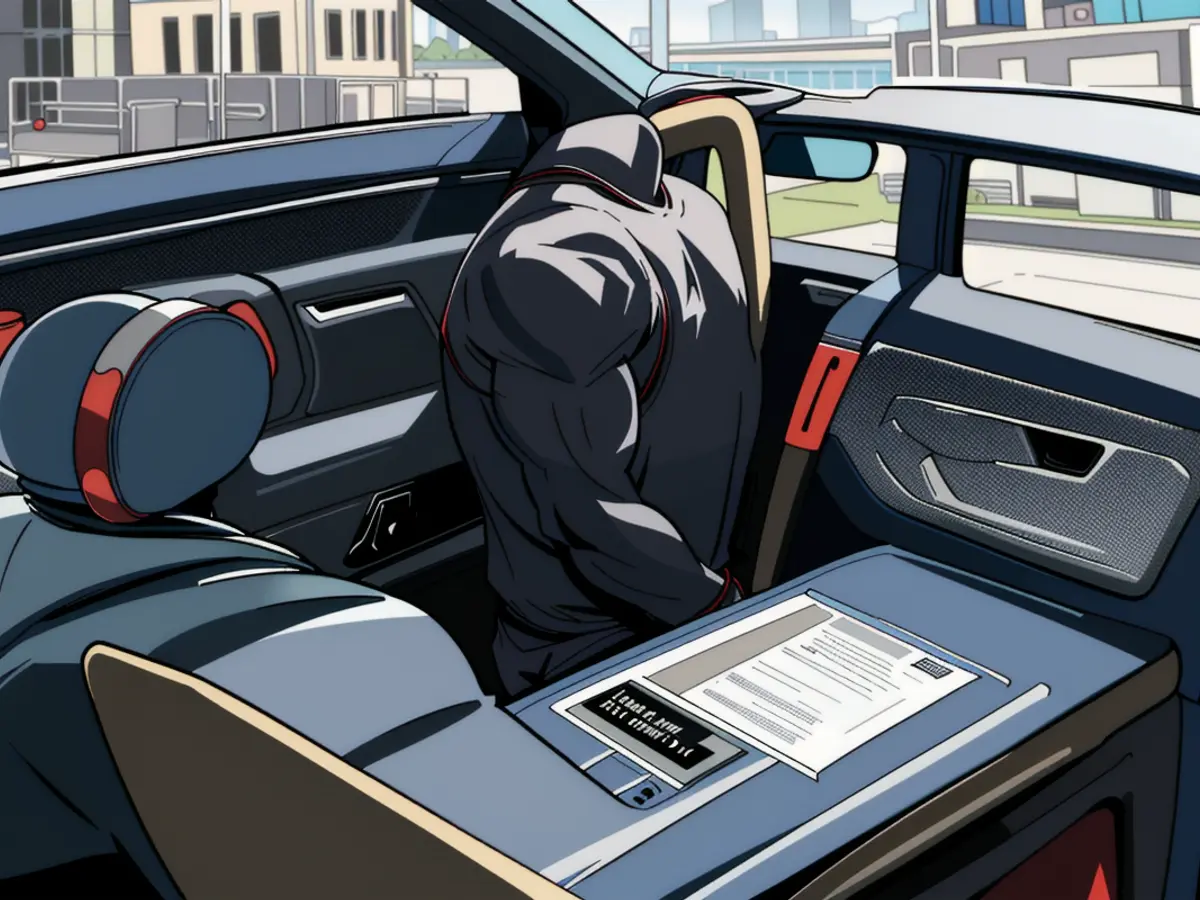Sitting Comfortably and Safely Behind the Wheel
Adjusting seating position inside a vehicle: Guidance provided.
Car journeys can be long and arduous, so making sure you're in the right position behind the wheel is vital for comfort and safety. Here's a guide on how to adjust your car seat properly to ensure you're well-supported and ready for the road.
Fine-Tuning Your Seat for Safety and Comfort
Asserting that driving with improper posture can be detrimental to both your health and driving performance, this guide aims to help you find a comfortable and secure position behind the wheel.
The Perfect Seat Position
- Place your buttocks as far back on the seat as possible, adjusting the length so your legs are flexed slightly when pressing the pedals. This helps prevent injury during a crash, as your knees won't be fully extended.
- Angle the backrest so your arms can reach the steering wheel with a slight bend. This ensures that, in case of an emergency brake, you're close enough to the wheel to perform necessary steering and evasive maneuvers.
Supporting Your Back and Shoulders
- Utilize a lumbar support to provide the necessary support to your lower back. Adjust it for the best fit around your pelvis— remember, lumbar supports are meant to be bottom-up adjustments.
- Ensure your shoulder blades are well-supported, ideally with the seat height set as high as possible while maintaining a hand's width between your head and the roof.
Optimizing Your Seat Surface
- Make sure your thighs rest loosely on the seat surface, and you can easily press the pedals without much effort. Maintain two to three finger widths of space between the back of your knee and the front of the seat to avoid pressure on your knee.
Adjusting the Headrest
- Ensure the headrest is set so that your head is protected, but your neck isn’t supported. A headrest set too low can cause severe head and neck injuries in a rear-end collision, so aim for the top edge of the headrest to be at the same height as the crown of your head.
Ditching the Heavy Coats
- Remove thick winter jackets while driving since Quilted and padded clothing can, according to ADAC, impair the protective effect of the seat belt. If the belt isn't close to your body, it can shift and result in serious injuries during an accident.
Advice for Parents: Car Seats for Kids
While the main focus of this guide is on adult driving positions, it's important to provide some advice for parents as well. After all, safe and comfortable car journeys should apply to everyone.
- Choose the Right Seat for Your Child:
- Use a rear-facing seat for infants until they exceed the seat's weight or height limit. Then, transition to a forward-facing seat with a harness.
- Move to a booster seat once a child outgrows the forward-facing seat's limits.
- Proper Installation:
- Ensure the car seat is installed securely, moving no more than one inch in any direction.
- Use the vehicle's seat belt or LATCH system for installation.
- Strap Positioning:
- In rear-facing seats, straps should be below the shoulders. In forward-facing seats, straps should be at or above the shoulders.
- Harness straps should fit snugly against the child's body, with the chest clip at armpit level.
- Booster Seat Placement:
- Use booster seats in the back seat, with the lap belt low on the thighs and the shoulder belt across the chest.
- Bulky Jackets in Children's Car Seats:
- Avoid using bulky jackets in car seats, as they can affect the fit of the harness straps. Instead, place the jacket over the child after they are securely buckled in.
- To ensure the safety and comfort of all passengers, it is essential for community policy to include recommendations for vocational training in proper car seat positioning, particularly for those who drive frequently.
- To steer clear of potential accidents, it is advisable to follow the employment policy guidelines provided, which includes adjusting the pelvis for a proper seating position and ensuring the headrest is at the right height to avoid neck injuries in case of a crash.
- For parents, whatsapp might be a helpful tool to remind them to remove thick winter coats from their children before buckling them into their car seats, as this can enhance the protective effect of the seat belt and reduce the risk of serious injuries during an accident.









